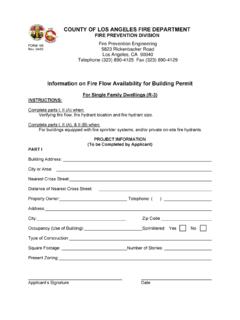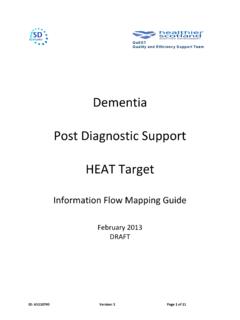Transcription of Transmission Line Factsheet - Delivering reliable electricity
1 Delivering electricity you can rely onCentral Minnesota Municipal Power AgencyDairyland Power CooperativeGreat River EnergyMinnesota PowerMinnkota Power CooperativeMissouri River Energy ServicesOtter Tail Power CompanyRochester Public UtilitiesSouthern Minnesota Municipal Power AgencyWisconsin Public Power 2020 Proposed Transmission line InfrastructureSHIELD WIREINSULATORCONDUCTORSTRUCTURE(self-wea thering steel)RIGHT-OF-WAYT erms to know Conductor:A wire made up of multiple aluminum strands around a steelcore that together carry electricity . A bundled conductor is two or moreconductors connected to increase the capacity of a Transmission :A continuous electrical path along which electricity can flow froma source, like a power plant, to where it is used, like a home. A transmis-sion circuit consists of three phases with each phase on a separate setof :One element of a Transmission circuit that has a distinct voltageand current.
2 Each phase has maximum and minimum voltage peaks atdifferent times than the other circuit: A circuit with three sets of circuit:Two independent circuits on the same structure with eachcircuit made up of three sets of wire:A wire connected directly to the top of a Transmission structure to protect conductors from a direct lightning strike, minimizingthe possibility of power :Towers or poles that support Transmission :An object made of a material like glass, porcelain or compos-ite polymer that is a poor conductor of electricity . Insulators are used toattach conductors to the Transmission structure and to prevent a shortcircuit from happening between the conductor and the :Land area legally acquired for a specific purpose, such asthe placement of Transmission facilities and for maintenance :A facility that monitors and controls electrical power flows,uses high voltage circuit breakers to protect power lines and transformsvoltage levels as needed to further distribute the energy into the electrical do the pieces fit together?
3 The conductors are attached to the structuresby insulators that prevent contact between theconductor and the structure, because contactbetween the two could result in a short circuit,potentially interrupting the power supply. Thefoundation, structure and insulators must bestrong enough to support the weight of theconductor and any wind and ice loads. Shieldwires attached to the top of the structures pro-vide protection against lightning strikes, mini-mizing the possibility of storm-related 2020 Group 1 proposed projectsBemidji-Grand Rapids (230-kV)Fargo-Alexandria-St. Cloud-Monticello (345-kV)SE Twin Cities-Rochester-La Crosse (345-kV)Brookings, SD-SE Twin Cites (345-kV)Proposed CapX 2020 Transmission line characteristicsThe conductors, structure type, configuration, right-of-way parameters and other design characteristics of the 345-kilovolt (kV) and 230-kV lines proposed by CapX 2020 will be considered by the Minnesota Public Utilities Commission and other relevant regulatorybodies in Wisconsin, North Dakota and South Dakota, as part of the approvalprocess.
4 The characteristics of any associated 161-kV lines will be decided by either the relevant state regulatory agency or a local governmental addition to line voltage ( 345-kV, 230-kV), typical determining factors indeciding the type and configuration of a structure are conductor number and size,wind or ice loads, terrain, structure spacing, right-of-way width and existing build-ings adjacent to the corridor for the proposed structureSingle circuit single pole structureDouble circuit single pole structureWhy don t the CapX 2020 proposals include underground lines?The proposed CapX 2020 Group 1 projects call for overhead lines. Underground lines usually are used only inheavily congested urban areas and when there is no viable overhead corridor, such as near an airport. Linesnormally are buried only for short distances a few miles at a two biggest difficulties with burying lines are cost and the time required to make repairs if there are failures.
5 An equivalent underground line can cost more than 10 times the amount of an overhead line , and it creates technical and operational challenges. Significantly more time is necessary to locate and diagnose aproblem on an underground line , and repairs can disrupt service for extended periods. Installing undergroundlines also can have a considerable environmental line characteristics phase would consist of bundled aluminum stranded, steel core conductors sized to carrythe appropriate amount of electricity . CapX 2020 proposes that the same conductor and bundled configurationbe used for all of the 345-kV single circuit and double circuit Transmission lines in the Group 1 345-kV lines, single steel poles are suitable for single or double circuits and wooden or steel H-frame structures can be used for single pole structures are made of self-weathering or galvanized steel and placed on concrete circuit steel poles vary in height from 120 to 150 feet and double circuit structures vary from 140 to170 feet.
6 Spans (or distance) between structures range from 800 to 1000 structures are two wood or steel poles with wood or steel cross bracing and conductor supports. Theycan be embedded in the ground without a foundation and vary in height from 100 to 150 feet, depending onthe span between structures. These structures are suitable only for single circuit single or double circuit 345-kV line typically requires a 150-foot wide right-of-way. A narrower right-of-way may be acceptable where a Transmission line is located adjacent to a pre-existing line ,road or pipeline line phase would consist of bundled aluminum stranded, steel core conductors sized tocarry the appropriate amount of 230-kV lines, single steel poles are suitable structures for single or double circuits andwooden or steel H-frame structures can be used for single circuits. Single circuit steel poles vary in height from 75 to 120 feet and double circuit steel poles vary from 95 to 145 feet.
7 Spans between structures rangefrom 600 to 900 feet. H-frame structures for 230-kV lines vary in height from 90 to 120 feet, depending onthe span between 230-kV line typically requires a 125-foot substation7-22-2008







